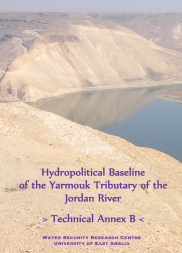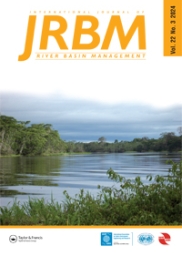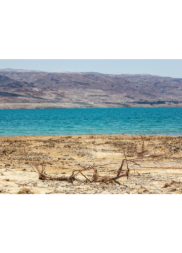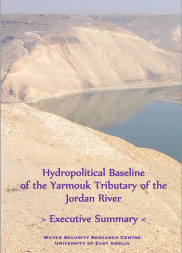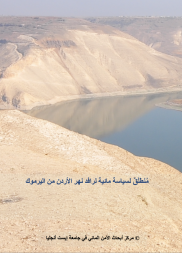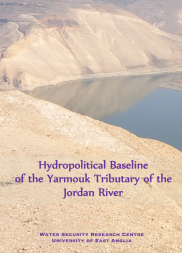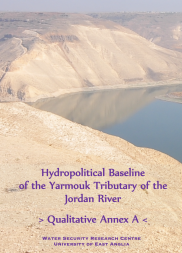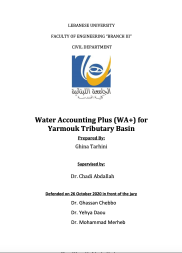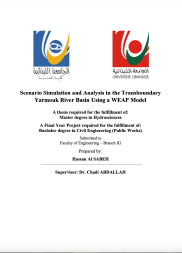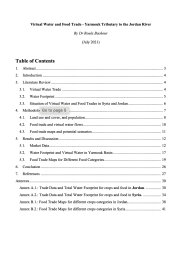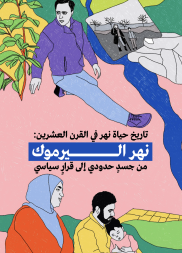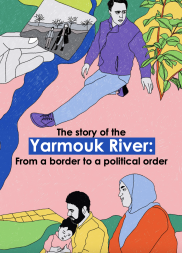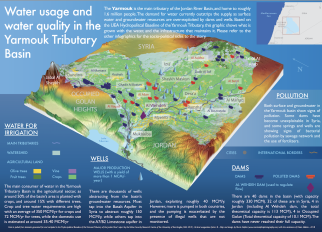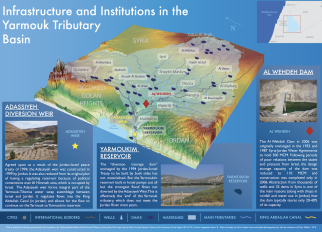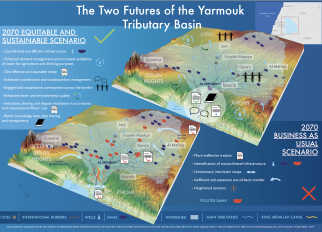
Yarmouk Knowledge Portal
Like the Jordan river basin, the Yarmouk tributary of the Jordan has been heavily framed in a politicised and securitised manner. Studies of the basins are centred around water diplomacy, conflict and cooperation and optimised approaches to water management. Little interest and focus have been given to other ways of knowing and researching water: the way traditional knowledge is adapted and re-configured by local users and the non-material values and meanings of water. Even as water experts and practitioners who have been working on water for decades, we end up engaging within closed circles of decision makers and engineers with little constructive dialogue with local communities. Community perspectives and lived experience. They are the end users and the ones that are blamed for the current realities of water exploitation. The Yarmouk knowledge portal hosted at WDC website is a dedicated page for contributions about the Yarmouk basin from a range of voices from the basin, amplifying community-focused reflections and knowledges.
Voices from the Yarmouk River Basin
ABU MUTHANNA
This testimony demonstrates just how strong of a unifying force a river can be – and how divisive we can make it
Known as Abu (father of) Muthanna, Dr. Taleb Maslamani lives on the Jordanian side of the basin in Sahm Al Kafarat village. Here, he beautifully narrates the transformations of relations between Yarmouk Basin communities and the Yarmouk River that he witnessed from a young age These changes continue to impact the way people make their lives, and the community’s relations with the river. They show how people’s collective memory was transformed once the river became a border, after being a tranquil passage of communication between communities on both sides of the river. Abu Muthanna leaves us with feelings of hope for a better future for younger generations where their relations with the river could be restored.
DR. LAITH AL ROUSAN
This lived experience exposes the sharp contrast between decisions made far from the river and those who bear the consequences of them
Dr. Laith Al Rousan takes us on a tour of his farmland in Al Mukheibeh al Tahta in Jordan, a land he inherited from his father. Located in the water abundant part of the basin and close to the river itself, the area has multiple springs, woodlands and hilly slopes where farming and herding have been practiced for generations. As part of a discovery of artesian groundwater in nearby Al Himmeh, a Jordanian canal construction project commenced in the 1980s to utilise this water for the thirsty cities and agricultural development. However, this project was abruptly abandoned in order to fulfil the water provisions of 1994 Peace Agreement between Israel and Jordan. The video depicts the contradictory logic and realities of how water should be used and managed from the perspective of engaged water users and that of the state.
UM LUAY and ABU LUAY
Um Loay’s understated expertise shows us why it is so important to get the ‘local’ perspective. People are rarely completely without ‘agency’, and respond to dire situations in ways that detached observers might never realise. The burden is thus placed on analysts to dig deeper and to reconcile this resilience with the systemic political and economic forces that create the situation
Most of the Yarmouk Basin sits in Syria and economic activities have long transcended its border with Jordan. Strong bonds of kinship and friendship developed when farmers and merchants regularly crossed the river and moved freely throughout the Hauran Plain. Today, the plight of Syrian people displaced by the conflict forces them to seek refuge and restart their lives within the same area – but on other side of the border again. Here, Um (mother of) Luay and Abu Luay tell us a story of reconnection to land and water in Al Rafeed village in Jordan and reminisce about life and livelihoods in their home villages in Dera’a (Syria). Um Luay demonstrates her extensive knowledge of water management in Syria and reflects on how water is used and valued in Jordan, where she engages in entrepreneurial projects despite limited water sources available for her and her family
ABU ANEES
Abu Anees narrates the story of farming in Jordan, where the search for ever-dwindling sources of water exposes a short-term and unsustainable mode of resource exploitation. His farm is based at the eastern part of the Basin in Al-Mafraq where extensive groundwater abstraction is taking place to support agri-business farming. On the journey he takes us to his land we see the effort required to make the land productive, and the selection of crop to match the dwindling amount of water available. Abu Anees then reflects on how national policies and realities of mass migration also play a role in how agricultural activities are carried out.
DR. NAZIH BRIK
Here we see how the politics of water is (so) much more determining than its biophysical aspects. When a military occupation divides up the land and denies its resources to its rightful inhabitants, they have little choice but to continue to resist through the ingenious manners that we see here.
The occupied Golan Heights (occupied by Israel since 1967) has been framed as a case of a ‘forgotten occupation’. In this video, it is centred as an integral part of the Yarmouk River Basin. Overlooking the Lake of Tiberias, the Golan is significant both for geostrategic and hydrological reasons – it is relatively very wet and full of fertile soil. The Syrian Jawlani communities that remain in the Golan are to this day denied access to their lands and water. Dr. Nazih Brik provides a comprehensive survey of Israeli occupation of Golan water. Farmer Salah Maghribi sheds light on Jawlani Syrian water struggles to remain in agriculture and develop adequate water capturing infrastructure in light of this ongoing dispossession.
Publications
